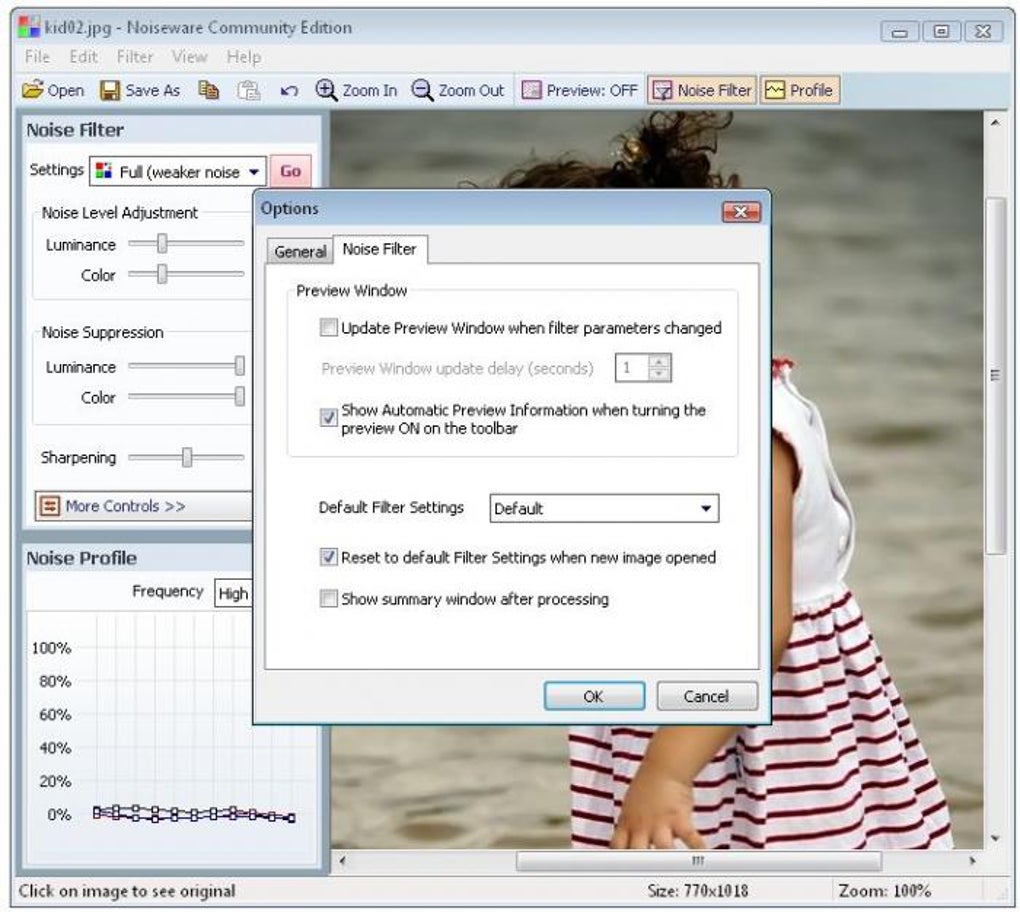
- MOVING NOISEWARE FROM OLD PROGRAM TO NEW FULL
- MOVING NOISEWARE FROM OLD PROGRAM TO NEW SOFTWARE
- MOVING NOISEWARE FROM OLD PROGRAM TO NEW ISO
Sometimes you just have to make the best of what you have with your digital camera and for this, fixing grainy photos and noise in post-production is the next step. Obviously, you can’t always work with more light. Some photographers hate using flash for their work (I’m definitely one of them) but other more subtle lighting devices like a reflector or soft box might work in some settings.Īn external flash can also be useful if used carefully and especially if its light can be diffused to avoid a harsh exposure. If you want to avoid graininess in the first place, see if the photo scenarios you’re working in can be augmented by more light. This is probably the most obvious preventative solution on this list but it deserves mentioning. Thus, if you’re unsure about the quality of the pictures you plan on taking, setting your digital mirrorless or DSLR camera to take both a RAW and a JPEG shot of your compositions is a useful tactic, for noise correction and for general versatility. The RAW image format is much more versatile for correction and details than JPEG, which is compressed inside the camera to begin with. The option to reduce noise will vary from device to device but try activating it and setting noise reduction to a low or moderate level to avoid detail loss Taking photos in RAW Not all cameras have a noise reduction setting built into their controls but, if yours does, it can be a handy in-camera tool for eliminating grainy photos. This sometimes works because it causes the camera to avoid overextending itself in capturing details from darker sections of a scene.Ĭheck out our guide to metering for more information. Setting your focus to the brightest possible object in your composition and taking a photo with the camera metered to this particular luminous point can also improve brightness and reduce noise. Metering the shot onto the brightest possible object If it can be functionally lowered after reducing shutter speed and increasing aperture, try doing that as well in your camera.
MOVING NOISEWARE FROM OLD PROGRAM TO NEW ISO
Lowering your ISO settings won’t necessarily work if the ambient darkness of the scene you’re trying to capture is too deep, but lower ISO does usually mean less noise. See our guide to overexposure vs underexposure. You can also slow down your shutter speed as an additional measure though this might not work so well for low-light shots of subjects in motion. Instead, raise the exposure by one f-stop of increased aperture and try taking a photo. To make this work, avoid raising your camera’s ISO settings, since doing this will just create the risk of more digital noise. While overexposing the photos you take is a whole other correction problem in many situations, it can also sometimes help prevent graininess.
MOVING NOISEWARE FROM OLD PROGRAM TO NEW SOFTWARE
This will save you the hassle of extra retouching and fiddling in photo editing software later on. Right off the bat, the best way to fix grainy photos is by avoiding them in the first place. Low exposure: An underexposed photo can be a very noisy photo and sometimes the graininess is caused by using the wrong exposure setting for your composition.įilter noise can also happen if you’re using filters, and noise from any of these causes can also be worsened by improper focus or shooting photos from a distance.Īs really basic problems with easy solutions, these can usually be fixed by making sure your camera is correctly focused and by getting closer to your subject if at all possible.
MOVING NOISEWARE FROM OLD PROGRAM TO NEW FULL
High quality full format sensors offer dozens of millions of light-absorbing pixels to compensate for low light, and consequently they also tend to have great ISO sensitivity. Sensor size: Grainy photos can happen in any camera if its capacity for light absorption is stretched to the limit or if its settings are improperly calibrated, but there is a definite connection between graininess and smaller sensors with lower resolution.

It often appears in shadowy scenes as a type of blotchiness. This is a common phenomenon in long exposure photos taken in low light or in time lapse photography.


 0 kommentar(er)
0 kommentar(er)
